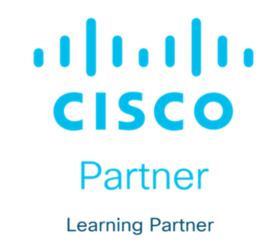Describe benefits of using Cisco collaboration solution, collaboration deployment models, and components of collaboration solution in on-premises, cloud, and hybrid deployments
Explore different codecs used in voice and video calls and explain how SIP signaling is used to set up and teardown calls
Identify Cisco Unified Communications Manager User Types and use Active Directory to manage Users in Cisco Unified Communications Manager
Identify the appropriate Cisco Unified IP Phone software solution for registration, recognise different Cisco Unified IP Phone models and their supported software, and identify various models of Webex video endpoints
Provide an understanding of Cisco Unified Communications Manager, including its deployment models, cluster architecture, network requirements, collaboration services, administration tools, and redundancy strategies to design, implement, and maintain robust collaboration networks
Examine the lifecycle of Cisco collaboration endpoints
Understand the dial plans and call routing in Cisco Unified Communications Manager including the key components, digit manipulation techniques, translation patterns, and practical skills to create and configure a basic dial plan
Configure a class of service elements in the Cisco Unified Communications Manager
Provide an overview of the reporting and maintenance tools available for managing and monitoring Cisco Unified Communications systems
Analyse media resources within Cisco Unified Communications systems, including conferencing solutions, transcoders, media termination points, and music on hold, to optimise their configuration and usage
Describe the differences between a rendezvous, Meet-Me and ad hoc conference, describe how to create a SIP Trunk for Cisco Meeting Server in Cisco Unified Communications Manager, and how to set up media resources to support ad hoc and Meet-Me conferences
Analyse the deployment, integration, and use cases of Cisco Instant Messaging and Presence Service alongside Cisco Unified Communications Manager to optimise communication through scalable, redundant, and secure solutions
Evaluate the features, deployment options, and integration of Cisco Jabber with Cisco Unified Communications Manager to optimise communication workflows, enhance team collaboration, and provide a smooth transition to modern communication solutions
Analyse Cisco Unity Connection components, architecture, and call handlers, focusing on the system’s deployment, configuration, and user management to optimise communication workflows and enhance user experience
Describe the Cisco Edge Services Components
Analyse the architecture and configuration of Cisco Expressway Zones, as well as the role of Search Rules, security certificates, and encryption strategies to enable efficient and secure voice, video, and collaboration services between internal and external networks
Analyse the architecture and configuration of Cisco Unified Border Element, including its key features for signaling and media interworking, security demarcation, toll-fraud prevention, and call admission control to enable secure, cost-effective voice and video connectivity across disparate VoIP networks
Describe how to access the Control Hub and navigate the menus to setup a Webex collaboration solution
Introduce User administration in Control Hub
Explore the registration process to Control Hub
Examine Webex Calling options using the Control Hub
Explore admin-configurable features and user configurable features in Webex calling
Describe Reporting and Maintenance
Provide a technical understanding of Cisco Webex cloud and hybrid media resources, including voicemail management, Edge Audio, and Video Mesh
Describe Cisco Webex Hybrid Cloud Connected Unified Communications
Describe Webex Hybrid Services
There are no prerequisites for this training. However, the knowledge and skills you are recommended to have before attending this training are:

